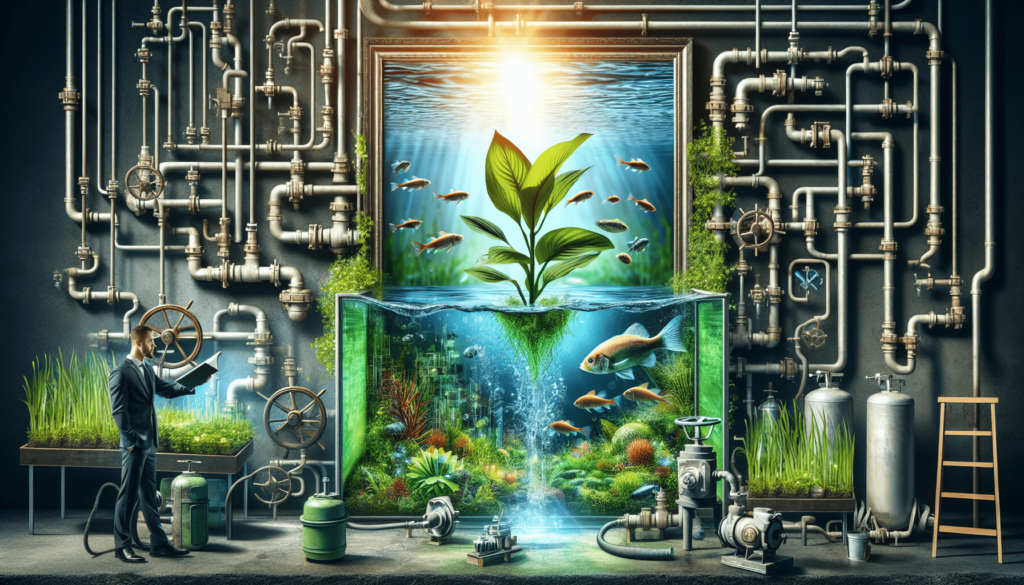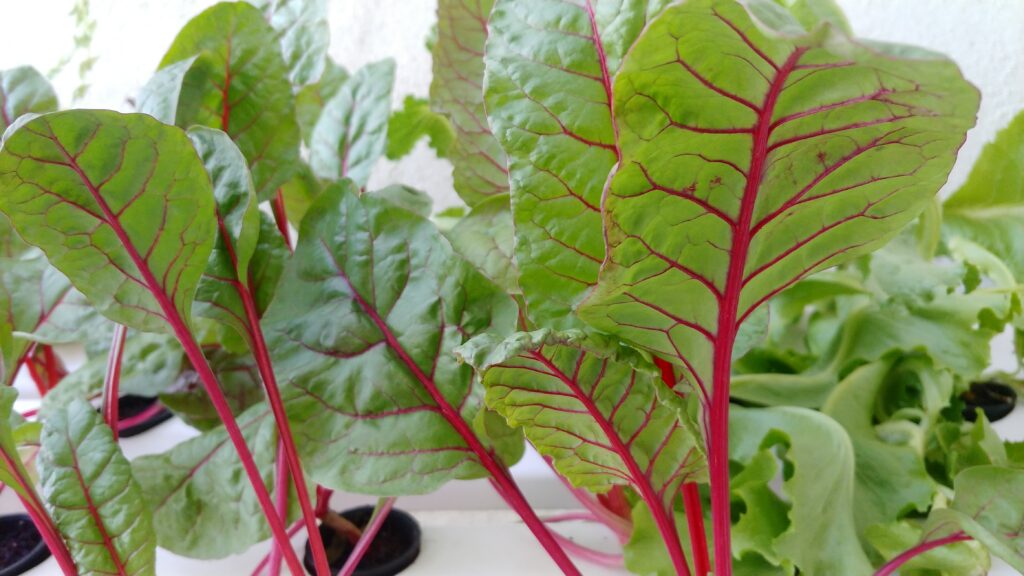Are you considering setting up an aquaponic system but unsure about the pumps and plumbing equipment you’ll need? Look no further! This article will provide you with a comprehensive overview of the essential equipment required for a successful aquaponic system. From the right type of pumps to efficient plumbing, we’ve got you covered. Additionally, if you’re also wondering whether you’ll need to pollinate plants by hand in an indoor hydroponic system, we’ll address that as well. So, let’s dive in and discover the key components that will help you create a thriving aquaponic system without the hassle.
Types of Pumps
Water Pump
When setting up an aquaponic system, having a reliable water pump is essential. A water pump is responsible for circulating and oxygenating water within the system, ensuring that plants receive the necessary nutrients and oxygen for healthy growth. There are several types of water pumps available, including submersible and external pumps.
Function
The main function of a water pump is to move water from one location to another. In an aquaponic system, the water pump is responsible for pumping water from the fish tank to the grow beds where the plants are located. It creates a continuous flow of water, allowing nutrients to be circulated to the plants and providing oxygen for the fish.
Types
There are two primary types of water pumps commonly used in aquaponic systems: submersible pumps and external pumps. Submersible pumps are placed directly in the water, usually within the fish tank or sump tank. They are typically more affordable and easier to install. External pumps, on the other hand, are located outside of the water and require a separate inlet and outlet pipe. They tend to be more powerful and suitable for larger systems.
Considerations
When choosing a water pump for your aquaponic system, you need to consider factors such as the size of your system, flow rate requirements, and energy efficiency. It is essential to select a pump that matches the specific needs of your setup to ensure optimal performance. Additionally, noise levels and durability are also important considerations when making a decision.
Air Pump
In addition to a water pump, an air pump is another crucial component of an aquaponic system. An air pump helps maintain healthy oxygen levels in the water, ensuring the well-being of the fish and promoting root growth in the plants. It is particularly important in systems with deep water culture (DWC) or nutrient film technique (NFT) setups.
Function
The primary function of an air pump is to introduce air into the water, promoting oxygenation. This helps prevent oxygen depletion, especially in situations where the water may become stagnant. The air pump is typically connected to an air stone or diffuser, which releases small bubbles into the water, increasing surface area and enhancing gas exchange.
Types
There are various types of air pumps available, ranging from small and portable units to larger, more powerful ones. When choosing an air pump for your aquaponic system, consider factors such as the size of your system, the number of fish and plants, and the depth of the water. It is important to select an air pump with adequate capacity to ensure sufficient oxygenation.
Considerations
Energy efficiency, noise levels, and durability are factors to consider when selecting an air pump for your aquaponic system. Some air pumps come with adjustable airflow settings, allowing you to control the amount of oxygenation according to the specific needs of your system. Additionally, ensuring proper maintenance and regular cleaning of the air pump and air stones will contribute to optimal performance.
Sump Pump
A sump pump plays a crucial role in managing excess water and preventing flooding in your aquaponic system. It is particularly useful in flood and drain (ebb and flow) systems, where water levels need to be regulated to avoid overwhelming the grow beds or causing damage to the surrounding area.
Function
The primary function of a sump pump is to remove excess water from the system and transfer it to a desired location. It is typically placed in a sump tank or reservoir where excess water collects. When the water level rises above a certain point, the sump pump activates and pumps the water out, preventing flooding and maintaining the desired water level.
Types
There are various types of sump pumps available, including submersible and pedestal pumps. Submersible sump pumps are placed directly in the water and are suitable for systems where the sump tank is located close to the grow beds. Pedestal sump pumps, on the other hand, are mounted above the water and feature a long intake pipe. They are ideal for systems with distant sump tanks.
Considerations
When selecting a sump pump for your aquaponic system, consider factors such as flow rate requirements, lift capabilities (the maximum height the pump can pump water), and energy efficiency. It is important to choose a pump that can handle the volume of water in your system and has a sufficient flow rate to prevent flooding. Additionally, noise levels and durability should also be taken into account when making a decision.
Types of Plumbing Equipment
Pipes
Pipes are an integral part of any aquaponic system as they provide the pathways for water to flow. Choosing the right pipes for your setup is essential to ensure optimal water circulation and prevent leaks. Several factors need to be considered when selecting pipes, including materials, sizing, and overall system requirements.
Materials
Different materials are available for pipes, and the choice depends on various factors such as cost, durability, and compatibility with water conditions. Common materials for aquaponic system pipes include PVC (polyvinyl chloride), CPVC (chlorinated polyvinyl chloride), and PEX (cross-linked polyethylene). PVC pipes are widely used for their affordability and ease of installation. CPVC pipes offer increased resistance to heat and chemicals. PEX pipes are flexible, making them suitable for systems that require bends and curves.
Sizing
The sizing of pipes is crucial to ensure proper water flow and minimize pressure losses. The diameter of the pipes depends on factors such as the flow rate required, the distance traveled by the water, and the number of outlets or connections. It is important to calculate the appropriate pipe sizes to avoid restrictions in water flow that could affect the efficiency of the aquaponic system.
Considerations
When selecting pipes for your aquaponic system, consider factors such as compatibility with the system’s components, overall cost, and ease of installation. It is important to choose pipes that are resistant to corrosion and able to withstand the water and nutrient conditions in your system. Additionally, ensure that the pipes are properly sealed to prevent leaks and maintain the integrity of the system.
Tubes
Tubes are another essential plumbing component in an aquaponic system, used for various purposes such as connecting pumps, air stones, and other system components. Choosing the right tubes is crucial to ensure efficient water and air flow, as well as appropriate fittings and connections.
Materials
Tubes for aquaponic systems are commonly made from materials such as PVC, silicone, or rubber. PVC tubes are popular due to their flexibility, durability, and affordability. Silicone tubes offer greater resistance to high temperatures and are suitable for systems that require heat-resistant tubing. Rubber tubes are flexible and are often used for connecting air pumps and air stones.
Sizes
The size of the tubes used in an aquaponic system depends on the specific requirements of the system and the components being connected. It is important to choose tubes with appropriate diameters to ensure optimal flow rates and prevent restrictions in water or air circulation. Consider factors such as the flow rate, distance, and connection type when selecting tube sizes.
Considerations
When choosing tubes for your aquaponic system, ensure compatibility with the components you are connecting, such as pumps and air stones. Consider factors such as flexibility, durability, and ease of installation. It is also important to properly secure and clamp the tubes to prevent leaks and maintain optimal performance.
Valves
Valves are essential for controlling and regulating water flow in an aquaponic system. They help manage the direction, speed, and quantity of water circulating within the system. There are various types of valves available, each designed for specific purposes and water flow conditions.
Function
The main function of valves in an aquaponic system is to control the amount of water flowing through different sections of the system. Valves allow for adjustments to be made to the flow rates, enabling fine-tuning of the nutrient delivery to the plants and maintaining proper water levels in different compartments. They also facilitate the isolation of specific areas for maintenance or in case of emergencies.
Types
Some commonly used valves in aquaponic systems include ball valves, gate valves, check valves, and flow control valves. Ball valves are simple and reliable, allowing for easy control of water flow with a simple quarter-turn handle. Gate valves, on the other hand, are more suitable for larger systems and offer more precise control of water flow. Check valves, also known as one-way valves, prevent backflow and maintain the integrity of the system. Flow control valves enable precise regulation of flow rates.
Considerations
When selecting valves for your aquaponic system, consider factors such as the size of the system, the desired level of control, and the specific requirements of the components being connected. It is important to choose valves that are compatible with the plumbing materials and able to handle the flow rates and pressure within your system. Additionally, ensure proper maintenance and regular inspection of the valves to prevent any malfunction or blockages.
Fittings
Fittings are crucial for connecting and joining different plumbing components in an aquaponic system. They provide secure and leak-proof connections between pipes, tubes, and other system elements. There are various types of fittings available, each designed for specific purposes and connection types.
Purpose
The main purpose of fittings in an aquaponic system is to create secure and leak-proof connections between different plumbing components. Fittings allow for easy installation and disassembly, enabling flexibility and adaptability in system design. They also minimize the risk of water leakage, ensuring the integrity and efficiency of the system.
Types
Some commonly used fittings in aquaponic systems include couplings, elbow fittings, tee fittings, and adapters. Couplings are used to connect two pipes or tubes together in a straight line. Elbow fittings enable 90-degree or 45-degree turns, facilitating routing around corners or obstacles. Tee fittings allow for branching connections, enabling multiple outlets or connections from a single pipe. Adapters are used to connect pipes or tubes of different materials or sizes.
Considerations
When selecting fittings for your aquaponic system, consider factors such as compatibility with the plumbing materials, ease of installation, and ability to create secure connections. It is important to choose fittings that are resistant to corrosion and able to withstand the water and nutrient conditions in your system. Additionally, ensure proper sealing and tightening of fittings to prevent leaks and maintain optimal system performance.
Connectors
Connectors play an important role in joining different components together in an aquaponic system. They facilitate the connection of pumps, air stones, and other system elements to ensure proper water and air circulation. There are various types of connectors available, each designed for specific purposes and connection types.
Types
The types of connectors used in an aquaponic system depend on the specific components being connected and the desired connection type. Common types of connectors include hose barbs, threaded connectors, compression fittings, and quick-connect fittings. Hose barbs are used to connect tubes to pumps or other components, ensuring secure connections. Threaded connectors allow for simple screw-on connections between components. Compression fittings utilize a sleeve to create a tight seal between pipes or tubes. Quick-connect fittings enable fast and effortless connections and disconnections without the need for tools.
Usage
Connectors are used to join different plumbing components in an aquaponic system, ensuring proper water and air circulation. They are commonly employed in connecting pumps to tubes or pipes, air stones to air pumps, and valves to pipes or tubes. The choice of connectors depends on the specific requirements of the system and the desired connection type for each component.
Considerations
When selecting connectors for your aquaponic system, consider factors such as compatibility with the plumbing materials, ease of installation, and ability to create secure connections. It is important to choose connectors that are resistant to corrosion and able to withstand the water and nutrient conditions in your system. Additionally, ensure proper sealing and tightening of connectors to prevent leaks and maintain optimal system performance.
In conclusion, understanding the different types of pumps and plumbing equipment is crucial when setting up an aquaponic system. Water pumps, air pumps, and sump pumps play vital roles in circulating and oxygenating water, while pipes, tubes, valves, fittings, and connectors ensure proper water and air flow throughout the system. By considering factors such as function, types, and specific system requirements, you can make informed decisions when selecting the appropriate equipment for your aquaponic setup. With the right equipment in place, you can create an efficient and thriving aquaponic system that provides the perfect environment for both plants and fish to flourish.


